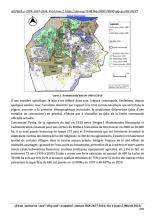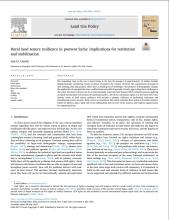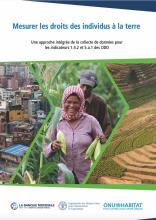Land Library Search
Through our robust search engine, you can search for any item of the over 73,000 highly curated resources in the Land Library.
If you would like to find an overview of what is possible, feel free to peruse the Search Guide.
/ library resources
Showing items 46 through 54 of 533.This article discusses the inherent limitations of law in transitional justice processes regarding land grievances. Through analysis of the case of Timor-Leste (East Timor), a country marked by post-colonialism, post-authoritarianism, and post-conflict.
Cambodia has suffered some of the highest rates of deforestation (measured as a percentage of forest cover) of any country since the 1970s – and rates have been increasing significantly in the past decade.
This detailed timeline provides further background information on the history and land governance of Eswatini summarised in the Land Portal country profile.
Opening up land-related administrative data, combining it with data from other sources and processing and making this data available as easily accessible information for women and men equally could be a means to counteracting land corruption in land management, land administration and land
L’originalité de la structure urbaine de Touba réside tout d’abord sur sa gestion dirigée par le Khalif général et son statut particulier d’un titre foncier qui s’adosse sur une forte démographie incontrôlée conjuguée à un fort étalement mal maitrisé.
This is the presentation of Dr. Marcello De Maria, Postdoctoral Researcher at the School of Agriculture Policy and Development at the University of Reading during the webinar on the Role of Open Data in the Fight against Land Corruption on January 28th, 2021.
There is little information concerning how people in the Global South perceive the benefits and costs associated with urban green areas. There is even less information on how governance influences the way people value these highly complex socio-ecological systems.
The impending close to the war in Syria brings to the fore the prospect of approximately 13 million forcibly displaced people considering returns to places of origin in the country.
Ce document vise à faciliter la collecte de données comparable entre pays pour le calcul des indicateurs des ODD 1.4.2 et 5.a.1 conformément aux méthodologies approuvées par l’IAEG-SDG.







